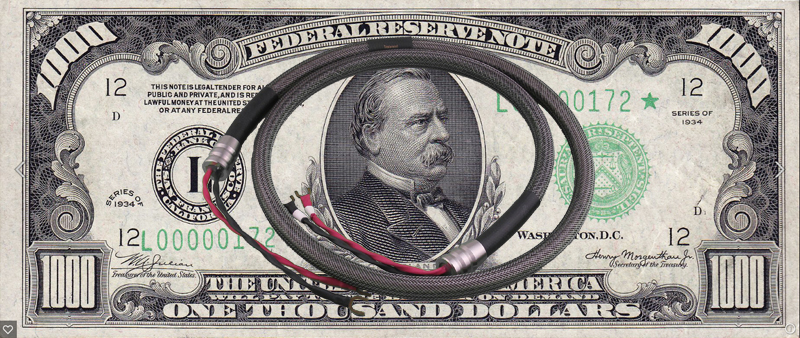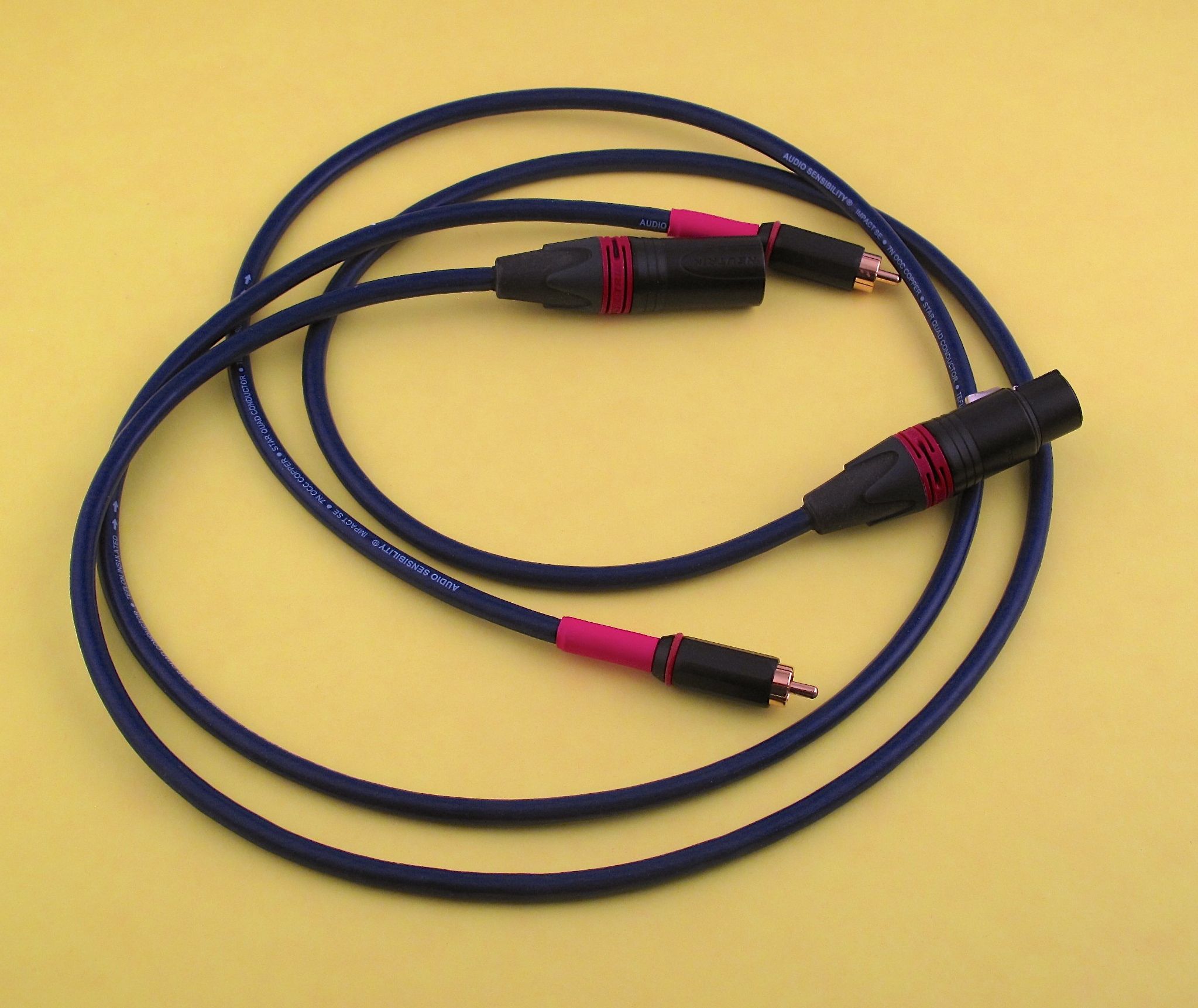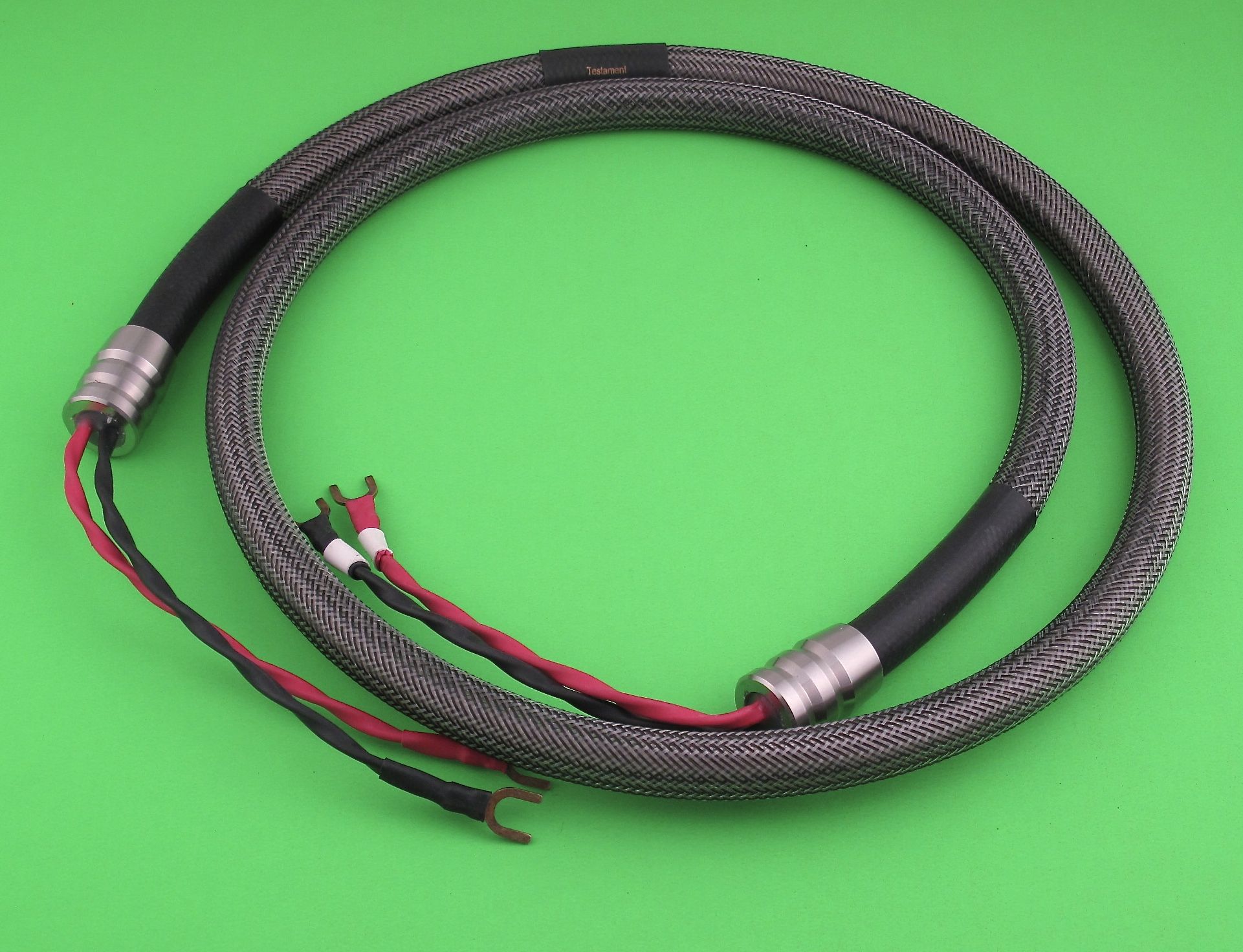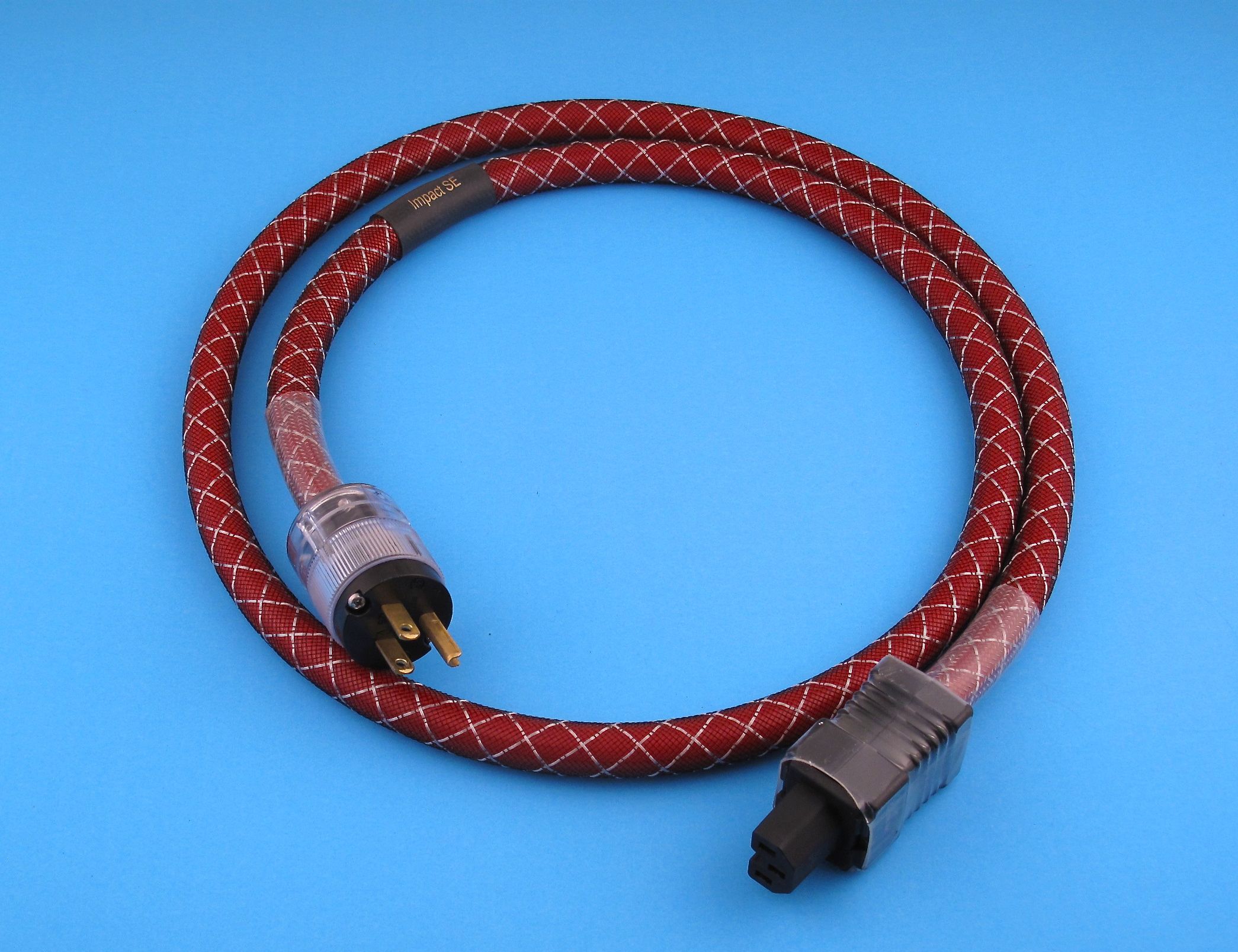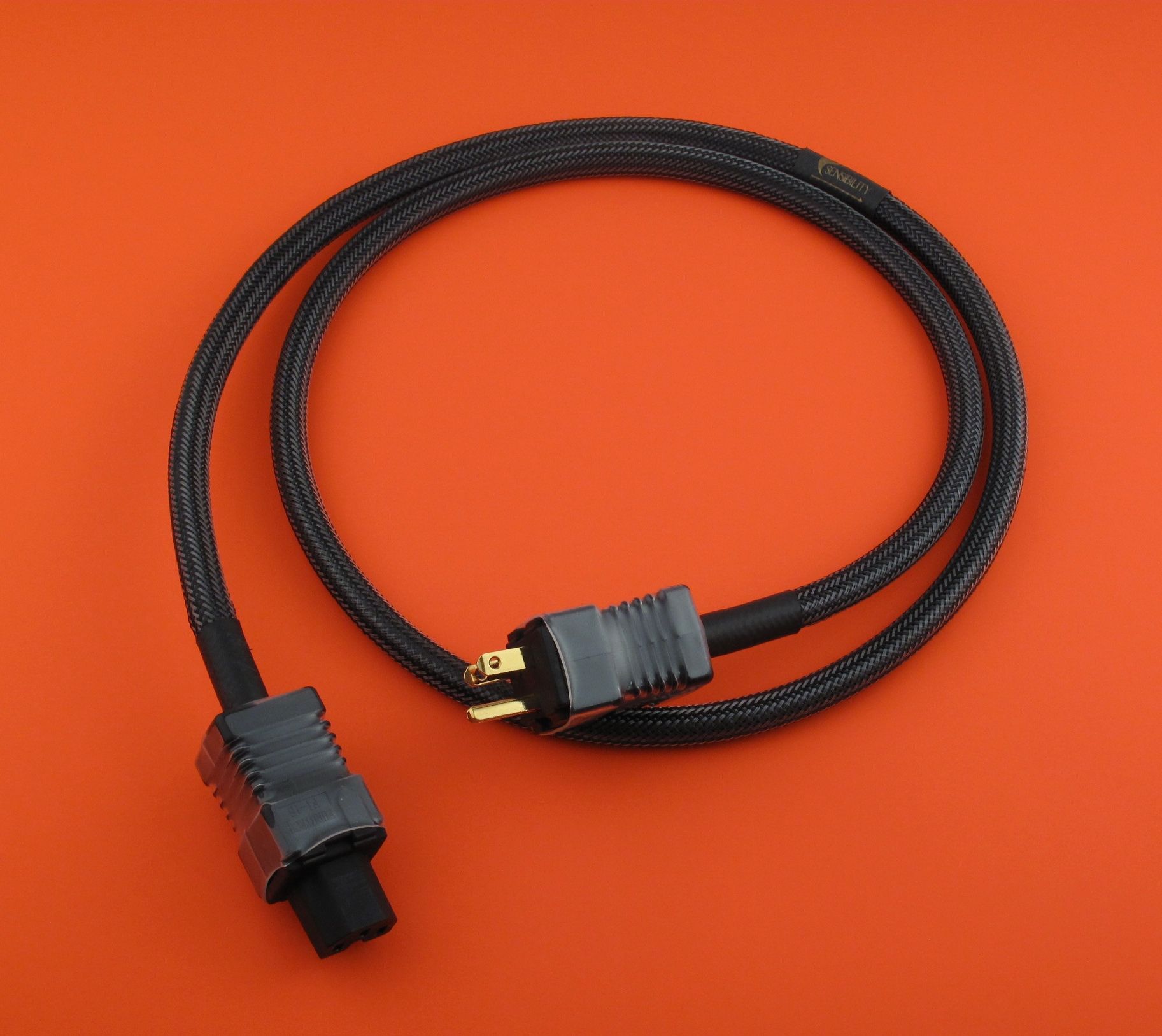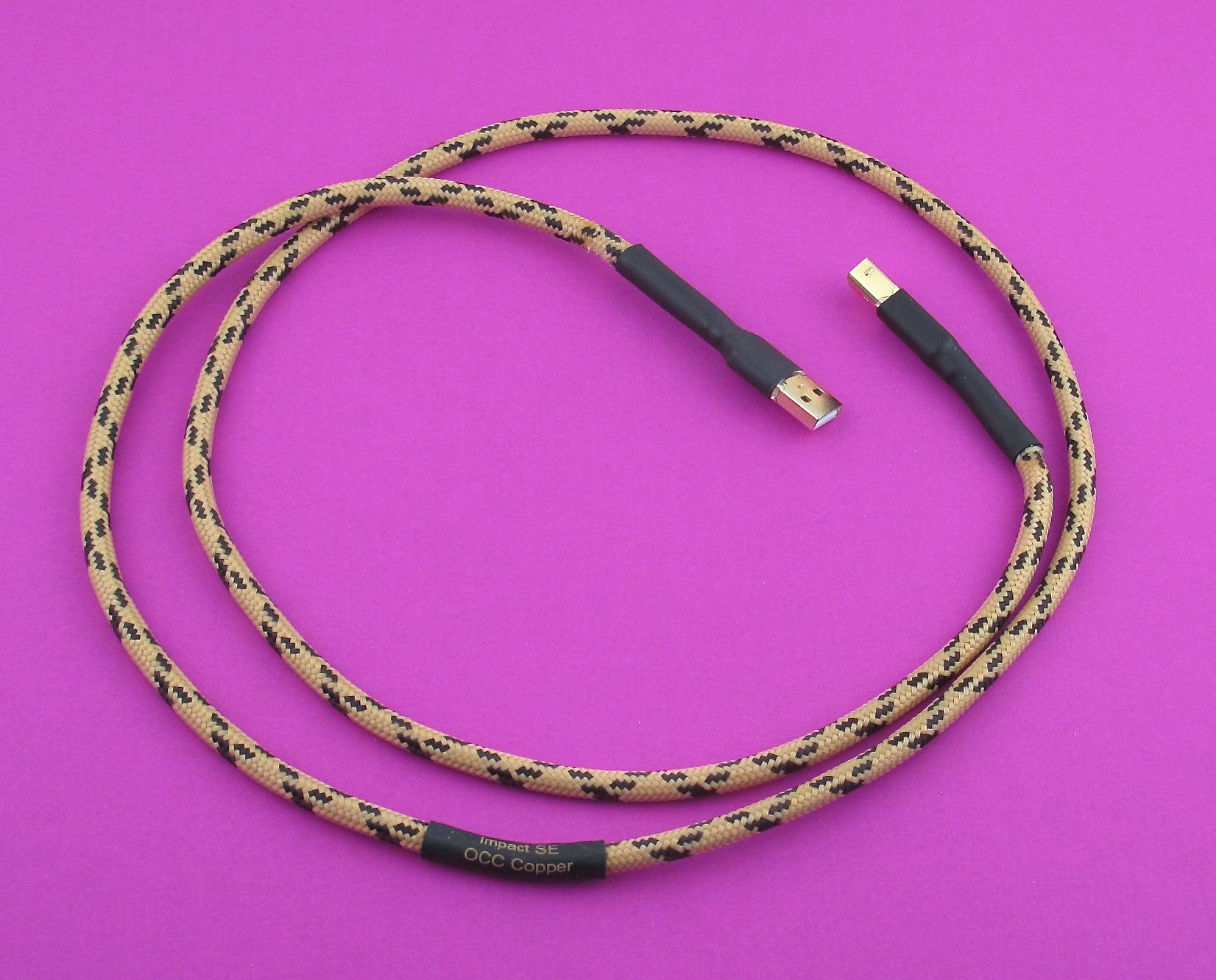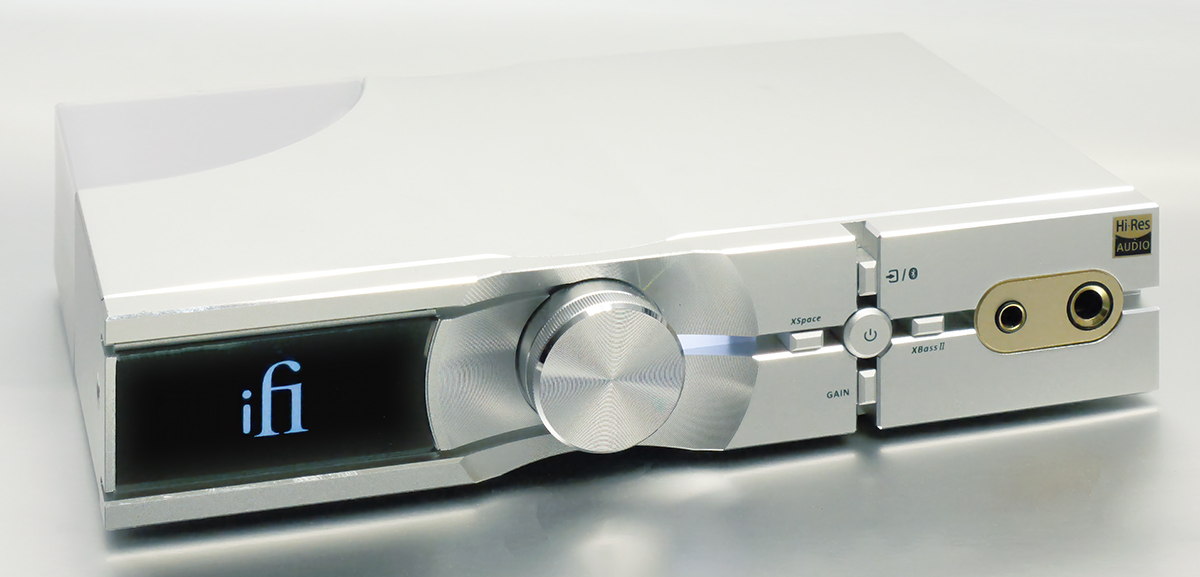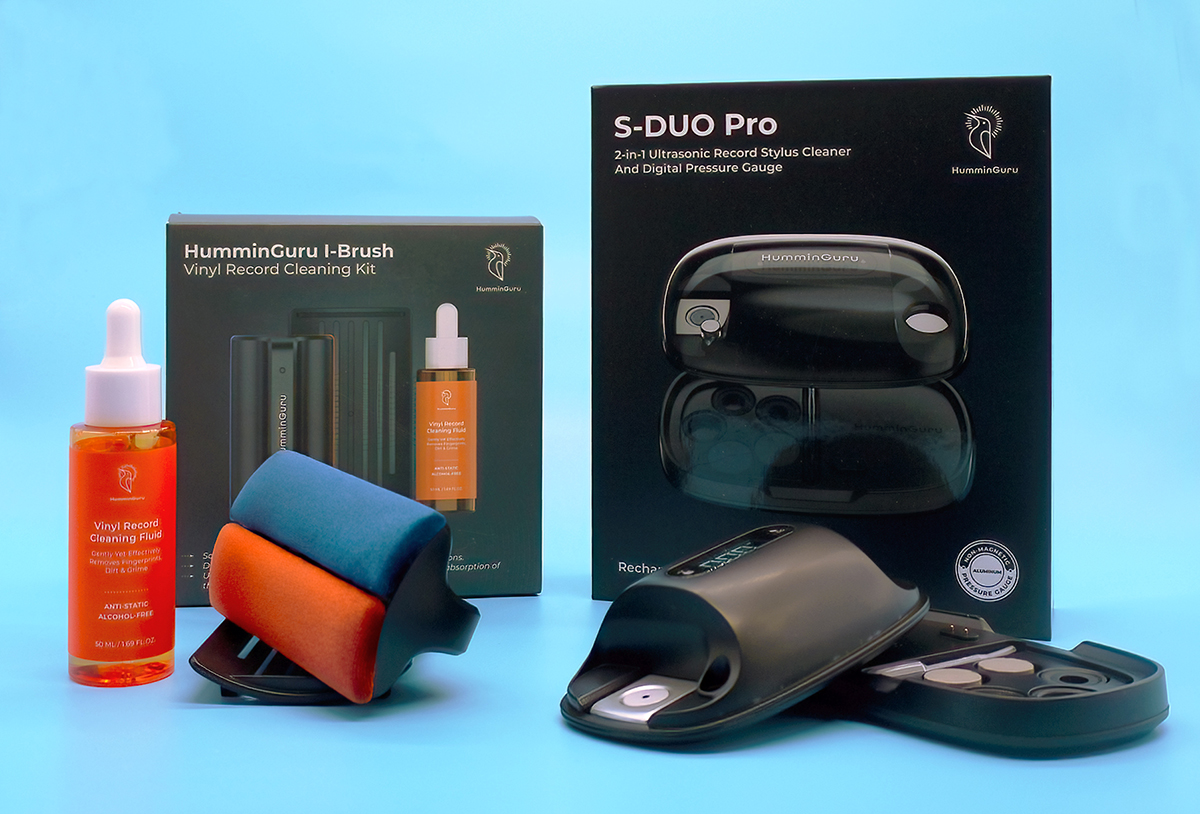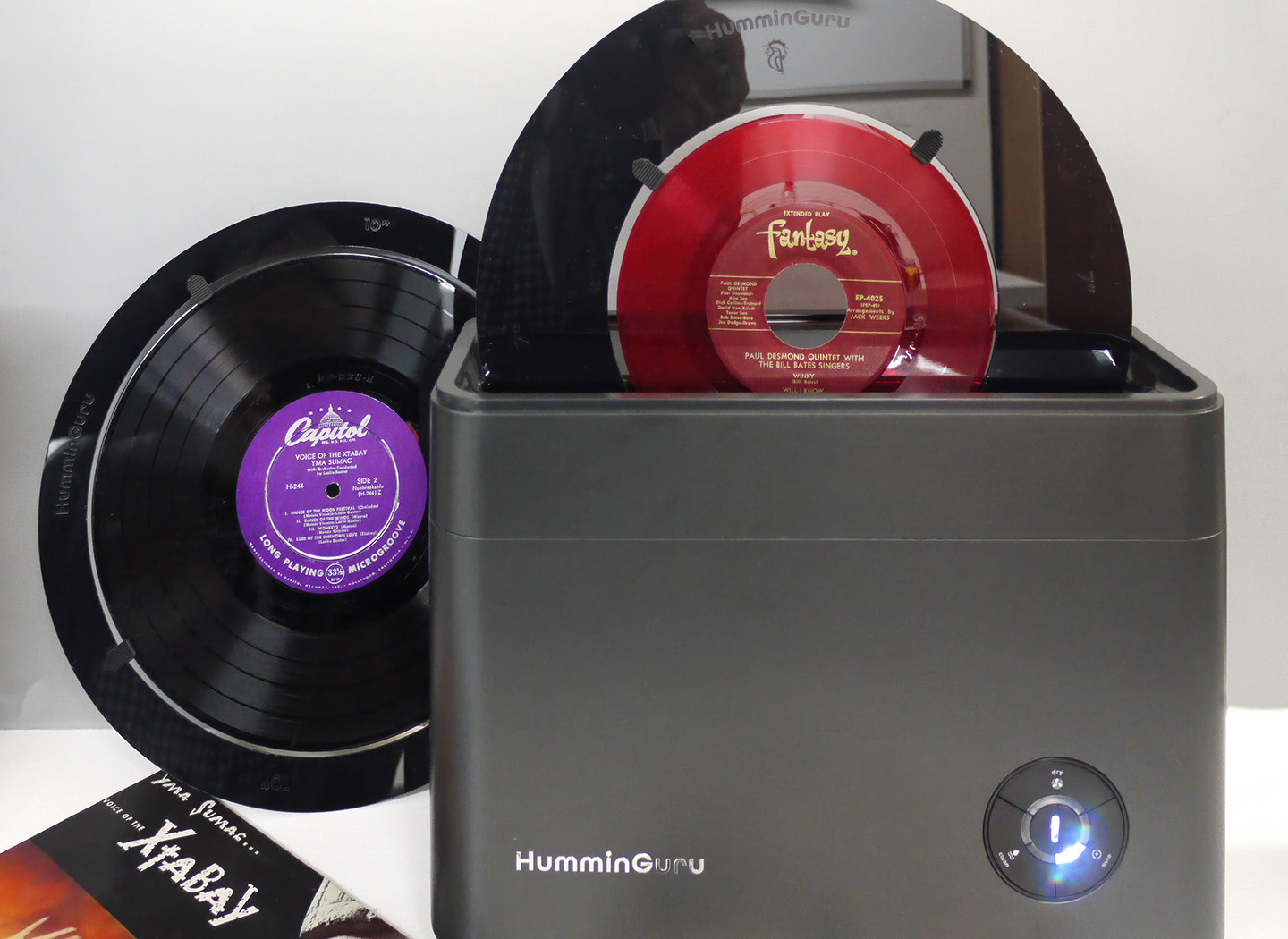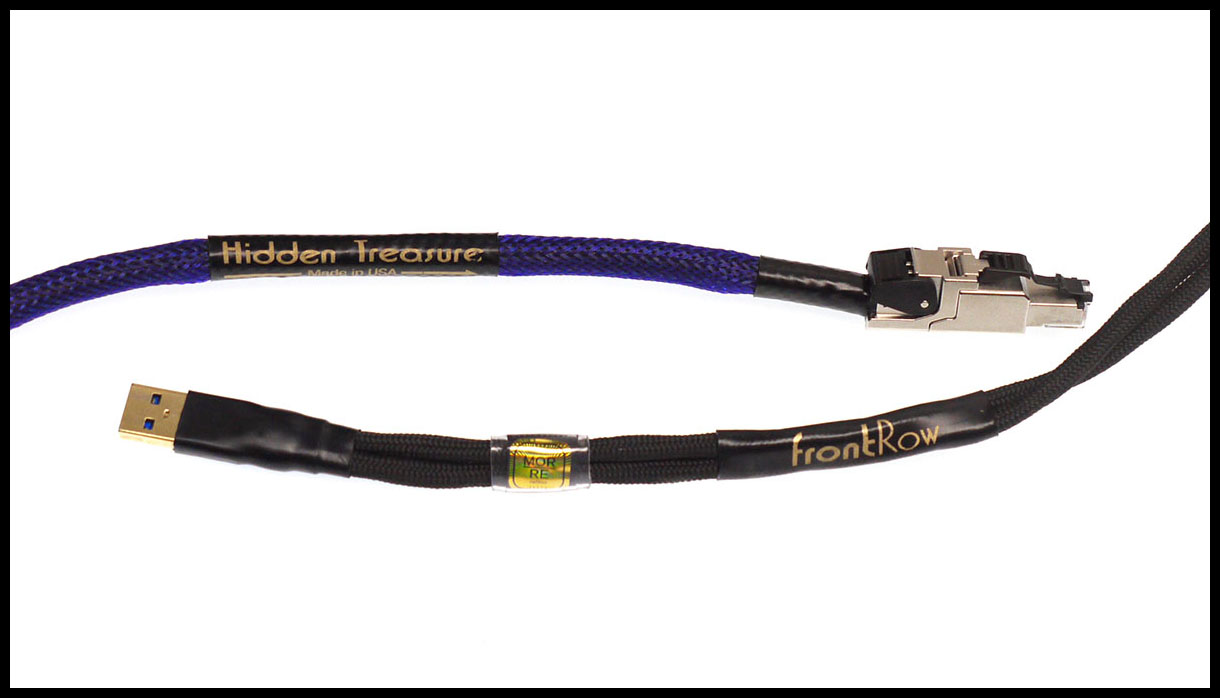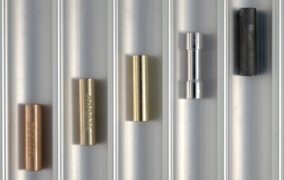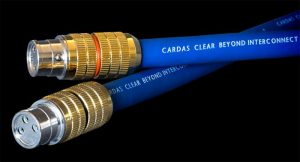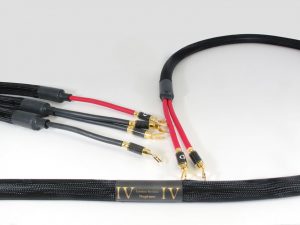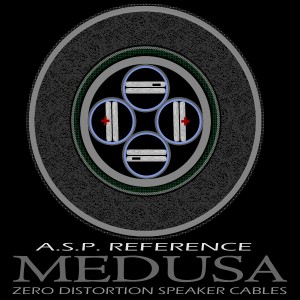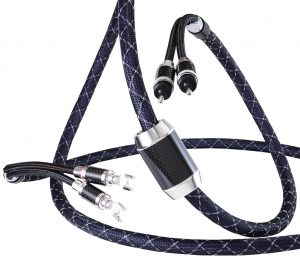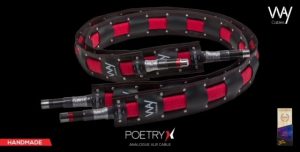"I can cable an entire audiophile system for $1000"
This was back in May of last year, and I was on the phone with Steven Huang of Audio Sensibility Cables, based in Toronto, Canada. I'm an old-school audio cheapskate, and had just remarked on how well one of Steve's very affordable phono cables had performed in my system, especially given the current audiophile market where $1000/meter is apparently the default entry level for any "decent" cable in high end audio. But wire up an entire system for $1000? Really? No way!
Now a year later, with other review commitments and life complications in the interim now out of the way, I've finally taken him up on the challenge.
I'd met Steve just once, at RMAF a few years back. His room featured both a diverse product line and details of the technologies he employs, particularly the Ohno Continuous Cast (OCC) copper and silver conductors, and deep cryogenic treatment. I had recently moved house, and was thinking of running a dedicated line for the system, so I was curious about cryo-treating 50' of 12 AWG Romex (yes, he does this). As it turned out, my electrician was able to appropriate an existing 20A line at very small expense instead, but I kept Steve's card. Google "Canadians are nice" and you get 19,000 hits. This is another one.
Now, my Nottingham Spacedeck turntable is set up for two arms. I was upgrading my mono cartridge (to the astounding Miyajima Zero, it turned out) and was thinking of replacing the modified Rega RB 250 arm (Incognito wired cartridge-to-RCAs, Expressimo brass counterweight and end stub). However, my AQVOX phono stage is fussy—it requires an XLR balanced cable with specific termination, shielding, and cable geometry issues. With my Origin Live Illustrious tonearm, I was quite happy with the Kimber TAK-Ag, a fairly pricy braided silver conductor cable widely considered among the best when I acquired it—and it surely still is. I have a pair of Denon DL-103s for trials, but to A/B a second arm through the AQVOX, I needed a second suitable cable-at a reasonable cost. I had checked around a few websites, and then emailed Steve Huang on a hunch. I was actually thinking about his Statement silver phono cable as a likely candidate, but he responded instead with…
"Our Impact SE phono cables provide absolutely killer price/performance. They have both low inductance and low capacitance. We can supply our 5pin DIN to XLR phono cables with the configuration of option 4) which matches your requirements."
He was right about the price. The Impact SE DIN/XLR is sold factory direct at $209 CAN, which is currently about $157 USD. He was also right about the performance. The Impact SE was virtually every bit as detailed as the Kimber, but with a richer tonal balance, easily audible in enhanced instrumental/vocal textures, hall sound decay, etc. And overall, I thought, actually a better partner to the more-lively-than-lush Lyra Delos cartridge because of that.
But back to the $1000 Challenge.
Yes, I know (as do so many audio forum trolls) that you can wire up a system for $10 with supplied freebie cables and power cords and hardware store zip cord, and it will work. Yes, you can get nice-looking made-somewhere-in-China blister-pack cables at Best Buy or Radio Shack and maybe keep it under $100 with the freebie power cords. On the other hand, any audiophile rag or webzine will regularly regale you with raves that ratchet you rapidly way past $1000, if not past $10,000. I know Positive Feedback actually covers a wider range of component price points than many similar venues. So I'm not pointing fingers to note that in the last couple years or so, the average $/meter for all the cables (about 40-odd interconnect, speaker, power, digital, and headphone) reviewed here is $1883 (with a range of $87 to $11,000). My own mea culpa is the High Fidelity Cables CT-1, at $1600/meter. And worth it, I had opined.
So a $1000 whole-system package target would be a pretty tough goal indeed, especially if you want premium conductors, terminations, construction and technical enhancements-things most cable companies reserve for the upscale market. And, of course, you also want really good sound. Read on.
Now, there is obviously no "standard audiophile system", but at minimum I would expect one or two sources requiring interconnects and AC cords, amplification requiring at least one power cord, and speaker cables. Add to that a USB cable for a DAC and/or phono cable for a turntable. Beyond that, you can extrapolate using your own set-up as a reference. My own "big rig" is fairly complex: power conditioner, two tonearms, three sources (phono, disc, DAC), a passive pre, two monoblocks, bi-wireable speakers. With XLR cables (usually costing more $ than RCAs), I can and do run balanced, dual-mono from cartridge to speaker. And of course, I can swap in/out alternate phono stages, active preamps, or other items under review, so I keep RCA cables around as well.
Getting the most Bang for a KiloBuck
Steve Huang put together an assortment of cables he felt would be of interest to audiophiles on a budget. Most of Audio Sensibility's cables feature Ohno Continuous Cast (OCC) 99.99998% (7N) copper (upscale items get Ohno silver) conductors. Dr. Ohno is actually a friend of the Huang family, dating from his time at the University of Toronto where Steve's father also spent time. There is much more information on the Ohno process on the Audio Sensibility web site. In addition, unlike the "high volume/big ad budget" cable firms, all Audio Sensibility cables (and connectors) are cryogenically treated for optimum performance. All are hand-assembled in Canada, and carry a 10 yr guarantee and a 30-day return option, with free shipping to the USA for purchases over $199. I gave Steve a run-down on my own system, and a couple weeks later a box arrived with an array of cables. Audio Sensibility has several product lines, but what would they put into a $1000 package? Here's the scoop on what he sent, including basic pricing ($USD approximated depending on actual exchange rate, which changes daily)...
Audio Sensibility Impact SE Interconnect Cables. I got two sets, 1m RCA, two sets, 1m XLR. Cable geometry is classic star-quad (ala Cardas), 2 Teflon insulated signal and 2 return, with a spiral copper EMI/RFI shield (and used as ground in balanced XLR configuration). The RCA connectors are the Furutech FP-126, with OCC copper (not brass) center pin; XLR gets Neutrik's gold plated. The deep blue outer jacket is PVC, and quite flexible. 1 meter is $154CAN (about $115USD per pair for either RCA or XLR). The Audio Sensibility Impact SE DIN/RCA phono cable shares the basic interconnect features and construction, at $169CAN (about $127USD) with several termination options. The DIN/XLR version I was using is $209CAN ($157USD).
Audio Sensibility Testament Speaker Cable. This has four cryo-treated 14AWG OCC copper conductors (2 signal and 2 return), star quad geometry, Teflon dielectric, in grey Techflex jacket about ¾" dia with stainless steel boots and a wide choice of terminations. A moderately stiff, inflexible cable. 1.5 meter (5') pair is $369CAN (about $279USD), the matching bi-wire jumpers are $74CAN (about $55USD).
Audio Sensibility Impact SE Power Cord (three at $159CAN/about $118USD for 1M) which employ three 12AWG High Purity Oxygen-Free (99.99%/4N) copper, Mylar shielding, and Stillpoints ERS fabric added to block EMI/RFI, in a fairly stiff braided jacket.
Audio Sensibility Testament Power Cord (two, at $279CAN/about $210USD for 1M) which employ three 13 AWG OCC copper conductors, braided copper shield and Stillpoints ERS for EMI/RFI. Furutech FI-15ME plug and FI-15E IEC connectors, in a somewhat more flexible black jacket.
Finally, the Audio Sensibility Impact SE USB 2.0 cable featuring separately shielded 7N OCC copper conductors for both signal and power, gold plated connectors, and a flexible woven fabric jacket. $104CAN, about $77USD.
Let's recap the key technical points in all that. Ohno, OCC, 7N copper, Teflon, Furutech, cryogenic treatment, Stillpoints ERS-buzz words that are all part of the high-end audiophile lexicon. You can spend some serious coin to get those same bragging points from cable firms with full-page ads in TAS and S'phile.
However: $115, $127, $279, $118, $210, and $77? These are simply not credible numbers acceptable to many audiophiles with reviewer-raved "Recommended Component" systems. There are some simple reasons for this. Pricey cables do make for pretty (and expensive) ads, and those ads must work or they wouldn't run them, with costs just passed on to the consumer in the retail mark-up. Let's be honest, reviewers love playing with expensive stuff they don't have to buy, even when an industry discount is available. Also, reviews of any high-priced gear will inevitably declare that expensive components "justify/demand/require" expensive accessories (like cables) for optimum performance. Just like a luxury car must be bought with leather seats, and an ocean-front mansion needs an infinity pool. Finally, at least some of the time it is true that you get what you pay for. For example, technologically enhanced cables (silver/gold/unobtanium conductors, minimal/exotic dielectrics, added filter networks, batteries, magnets, dongles, etc.) should do something for the extra tariff. But I do think it fair to note that many audiophile reviewers promote (if only by omission) a prejudice against cost-effective audio products, especially cables. A quick skim through the letters to the editor page at TAS or S'phile will evidence the subscriber outrage at audiophile price inflation-particularly with cables; you can read more extreme invective on the topic from any un-monitored Internet forum.
Actually, although some reviewers do write up cables frequently (i.e., loaners), many more apparently dread the prospect. I fall in the latter category, but not because I don't/can't/won't hear differences in cables. I do, in many areas: tonal balance, resolution, "speed", spatial presentation, "musicality", attack and decay, coherence, fluidity, dynamics, etc. But cable "sound" is inherently system and listener-dependent, and one man's better is likely another's worse and a third's no-difference. Odds are the lady of the house hears such differences better than the dude in the sweet spot, but she cares a whole lot less about such silly things. As she may hold veto powers on aesthetic grounds, a cable's appearance may well trump sonics. So I must observe here that Audio Sensibility's budget line Bling Factor is rather low, more Plain Jane than ostentatious. Yes Dear, that wire does look like a bungie cord from REI, but…
Audio Sensibility will "burn-in" cables for a nominal up-charge, but they didn't have time to condition most of what I got. I have a Hagerman burn-in box, but to deal with a whole carton's worth of cables, and with the Blizzard of 2016 then fast approaching, the only audio-sensible thing was to get out of town. Before heading off for a week in the Caribbean, I daisy-chained the RCAs from the Hagerman to the Bent Audio passive pre, and the XLRs likewise to the power amps, these and the PS Audio power regenerator in turn fitted with the Audio Sensibility Impact SE Power cords. The Testament speaker cables I connected to a pair of bookshelf speakers, one of which I wired out of phase (i.e., red to black). The Testament Power cords were plugged into spare disc players connected to the preamp with other cables, and set on repeat. I turned on the Hagerman, set the Bent Audio TAP volume to a healthy sshhrrriipppp sshhrrriipppp sshhrrriipppp, and rotated the speakers face to face, thus cancelling most of the sound. Bye!
Upon my return, I employed my other favorite burn-in tricks: I swapped the Hagerman out for the CD player and gave the whole shebang 24 hrs of high-level Bela Fleck and the Flecktones' Cosmic Hippo, a conflation of deep bass and percussive highs well known to most audiophiles, this while the Missus was away. And I always run the Ayre Irrational But… sweep before any critical listening.
Loomosity, Synergy, and Symbiosis
The traditional cable review approach—simply introducing a single new cable in a complex system—can be misleading. Most "new" cables do seem to immediately improve a system in some way(s). But divorce court rules herein apply: yes, the new and exotic usually appear brighter, more articulate, more sensual, etc. than what one has long lived with. But over time, well…maybe not many of us should just A/B spousal prospects, either. Cable companies naturally encourage the "full loom" approach, suggesting that shared voicing, geometry, or materials have synergistic benefits. Audiophiles also recognize that cables function as subtle tone controls, and prefer to mix and match to optimize results with specific components or rooms seeking symbiotic results; running the same basic system in three very different rooms has taken me from mostly JPS to all-Nordost to polyglot, so I see both points.
Given I had a full suite of Audio Sensibility cables for trial, I could turn the usual review process on its head. I set up a basic Audio Sensibility "loom", and took time to habituate to that. The Oppo BD-103 disc player has variable line output, and can be connected directly to an amp, no preamp needed. So: one source Testament power cable ($210), one set Impact SE interconnects ($115), one Impact SE amp power cable ($118), and one set Testament speaker cables ($279), everything run direct from my Furutech wall outlet, no power conditioning. I could then swap out any single link and compare to the "full loom" Audio Sensibility set-up. I had plenty cables on hand to compare, but this is not intended to be a "shoot-out" review, cable by cable. Instead, I listened to a variety of SACD, XRCD, and other audiophile-cred CDs and test discs, and came to several conclusions.
First, that $722 Audio Sensibility "loom" certainly meets my audiophile criteria in every respect. Steve wins! Every comparison with "freebie/cheapo" cables was decisively in Audio Sensibility's favor. At no time did I feel I was missing anything at all in the presentation of familiar material. Overall, the sound was smooth, clean, balanced, with a very good sense of space, pace, and dynamics. Given I had $284 leftover, I swapped a second OCC Testament power cord for the Impact SE, a $92 upgrade. Even better: the Testament improved on the Impact SE in both dynamics and fluidity, total now $814, and thus demonstrating the superiority of the 7N OCC to the 4N OFC. Bottom line—I could live very happily with this combination. Don't tell my wife.
What about more complex rigs? The sticky points are the fixed $279 for the speaker cable, and the up-charge for the OCC Testament Power cord. Staying with the OFC Impact AC cords:
1 Source Power: $118
Interconnect $115
Integrated Amp Power $118
Speaker $279
Total: $630
2 Source Power $236
2 sets Interconnect $230
Integrated Amp Power $118
Speaker $279
Total $863
1 Source Power $118
Interconnect $115
Preamp Power $118
Interconnect $115
Amp power $118
Speaker $279
Total: $863
Add a power conditioner with Impact SE AC cord for $118, or upgrade one power cord to a Testament for $92 or add a phono cable for $127 or USB for $77 as needed and still be under $1000. Want to max out the $1000?
2 Source Power $236
2 Sets Interconnect $230
Preamp Power $118
Interconnect $115
Amp Power $118
Speaker $279
Total $1096, so technically over the $1K threshold…but Audio Sensibility frequently runs sales, I noticed 12% off during the Montreal Audio Show... you can do the math.
Like many audiophiles, I have a box of "spare" cables in the closet going back to Roger Skoff's original XLO. I got me copper, silver, carbon fibre, coax, braided, shielded, ribbon, etc. None of them are current product, so no names will be mentioned, but there was always a reason I acquired and kept them, of course. Most cost considerably more (in 2016 dollars) than the Audio Sensibility wires, but none were top of the line. In changing out one cable or another, there were usually perceptible differences in the overall sound compared to the all-Audio Sensibility loom. For the most part, a given cable might be a tad better here, or a bit less convincing there, or vise versa—my system easily reveals such differences. But none of the "about $300-$600" cables clearly out-classed the economy-minded Canadians. In particular, the Audio Sensibility cables were definitely preferred over what I had considered good "budget" cables from Kimber, Audioquest, and Zu, and several of those 2-guys-in-a-garage Internet offerings.
Keep in mind I had intentionally habituated—or recalibrated, if you prefer-my listening expectations to the characteristics of the Audio Sensibility "loom". That basically invokes the "same-source synergy" principle. On the other hand, inserting either a Nordost Heimdall interconnect or my Harmonic Zen Satori speaker cable into the Audio Sensibility loom revealed both to sound "colored" by comparison. But of course, I knew that! The Heimdall tends towards leanness mid-bass down, and the Satori is a bit full and warm in the same octaves, but the combination has been quite welcome in my system-the symbiosis argument, if you will. But does that not imply the Audio Sensibility cables are more neutral…?
With more expensive, current-product competition, some ratings did change. Just as I preferred the Audio Sensibility Testament Power cord to the Impact SE, I still prefer my Tel-Wire AC Cords (also OCC copper, $999) overall. This in part because, being unshielded, they are extremely flexible in tight spaces. The Audio Sensibility power cords are stiff because they are very well-shielded, and thus did not benefit as much from the $200 Audio Prism Wave Guide common mode noise filters as did the Tel-Wires in my RFI-riddled listening space.
I am not much into file-based playback, but have become addicted to Hi-Res streaming from ClassicsOnline. I tried the Audio Sensibility USB between my MacBook Air and the iFi iDAC2. I felt it was clearly superior to stock USBs, but not quite to the standard of the more expensive ($300) Wireworld Silver Starlight 7. But at the price, it seemed an obvious choice to partner with a $49 Audioquest Jitterbug, which I tried with indeed excellent results. But no, still not on par with the Wireworld mated with the Uptone Audio Regen, which alone costs $100 more than the Audio Sensibility USB.
The only $1000+ signal cables I had on hand at the time were the High Fidelity Cables CT-1 interconnects ($1600/m). Here the story was different. The Magnetic Conduction cables simply convey a far more involving musical presentation than any other cable I've auditioned, including Audio Sensibility's. At more than 10x the cost of the Impact SE's, they certainly should. I have only show demo experience with other tweak/boutique cables, but I should certainly hope they could also surpass the Impact SEs etc. (else WTF?) For that matter, I would expect Steven Huang's upscale offerings to also surpass his budget lines-but even his Ohno OCC silver designs mostly stay south of $1000USD.
Pace, fellow PF contributors, readers, and audiophiles everywhere. I am not suggesting Audio Sensibility's $115 interconnects are Reference caliber designs, are better than your $1K, or $10K cables. I'm not even suggesting you shouldn't spend $1000+ on a single cable if that's where you decide to spend your money (as opposed to wine, women, and 24/192 songs, perhaps?). Of course not, but as cable prices continue to escalate, I think it useful to identify what I would consider Benchmark value-for-money cables. I sure wish these cables were around back when I had my Dynaco PAS3/Stereo 70, AR/MMT/Grado turntable, and Spica TC-50 system, which were all "Benchmark" products in their day-you could spend a lot more and do much worse. For a beginning/budget/bedroom/home theater/desktop/dorm system, I think it would be hard to do much better than these seriously good Audio Sensibility cables at anywhere near the price. If you are assembling a more ambitious rig from scratch, you can go "full-loom" for not much scratch at all, and evaluate those more expensive cables and components in a consistent-and sensible-way. Highly recommended!
Audio Sensibility
3 Mylesview Place
Toronto, Ontario
Canada M2N 2M7
416-953-8898




